How to varnish a front door with Epifanes step by step
Varnishing a wooden (front)door or any other wooden object like a table or chairs may seem a lot of work. However, it is easier than you think and everybody can achieve a perfect long lasting finish with a good preparation and the right Epifanes varnish. There is also a video available with all the information.
Step 1: Schedule and goals when varnishing a door
Determine what you want to achieve. Varnishing a door or a table from bare wood takes more time than applying maintenance coats only. Are you able to work in a well-conditioned closed environment or are you working outside? Drying times during the winter months are much longer than under warmer conditions. Plan your varnish job well in advance and work step-by-step.
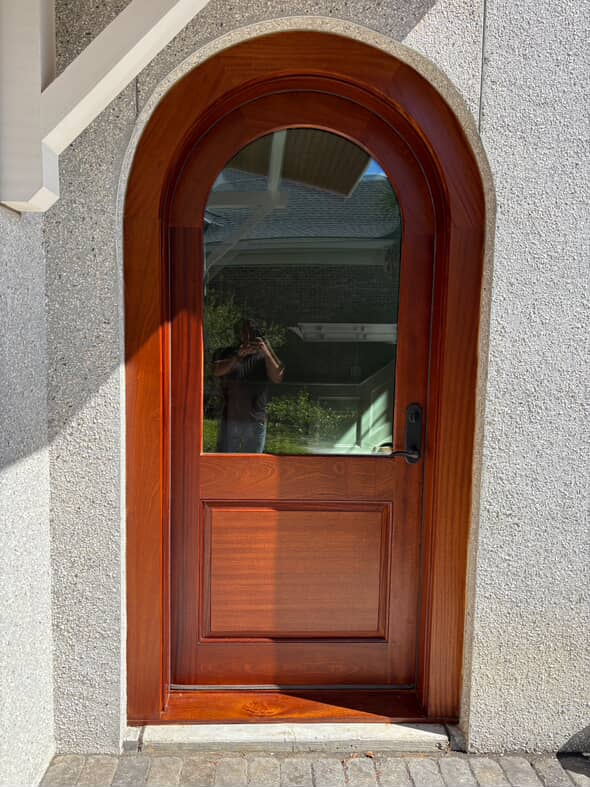
Step 2: Condition of the varnish
An Epifanes system can last for years or even more than a decade when it is well applied and has regular maintenance. It is important that you apply sufficient coats when building up the system and apply maintenance coats regularly. When the wood is previously varnished, you can judge the quality of the varnish by one of the following three points.
1. The varnish system shows loss of gloss. In this situation you can clean and sand the surface and apply at least two or more new coats.
2. The varnish system looks poor, it shows loss of gloss and light crazing. The UV protecion in the varnish in gone. Now it is important to clean and sand the varnish thorough and apply at least four or more new coats.
3. The varnish system is in a bad condition. In the last situation the old system should be removed and replaced by a new system from scratch. You can remove the varnish by sanding with a low number grid sandpaper. Make sure you remove all the varnish. For difficult edges you can use Scotch-Brite. We never recommend using paint strippers on wood. Although it works well, there is a possibility the stripper gets in to the wood and this will damage the bonding of new varnish layers.
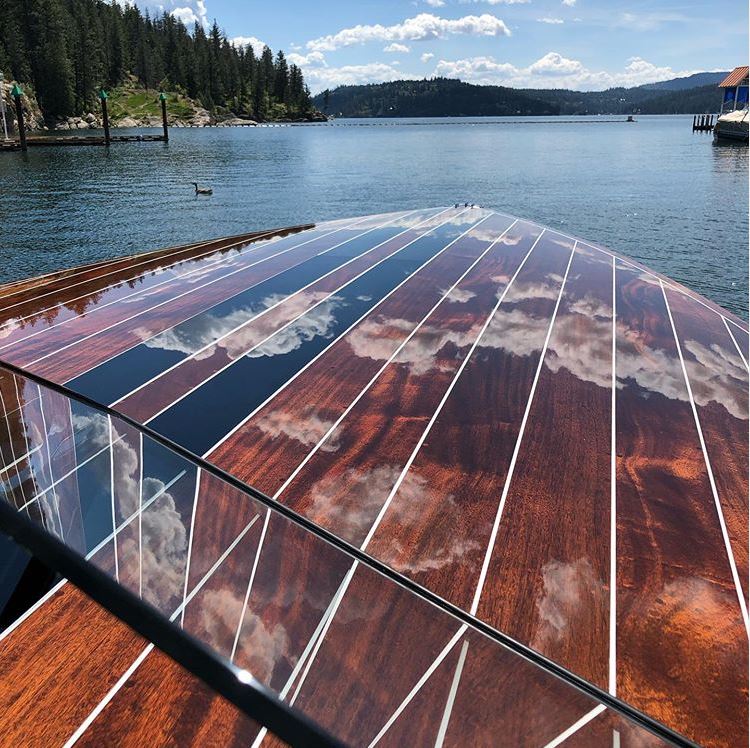
Step 3: Do I want a high gloss or matt finished front door/furniture?
There are two main options that you can choose from. You can either go for a high gloss front door, or a matt finish. Within the Epifanes range we have both products ready for you. Starting from bare wood, you will always need to start with a high gloss. A high gloss gives a higher film build up and a better UV protection. That is why you always have to start with a high gloss in a new system.
A complete system consist of at least 7 layers starting from bare wood. That is why it is very important that you maintain the varnish after application. A good varnish system can last for years if you apply 1 or 2 maintenance coats regulary. When there is a slight loss of gloss, sand the surface and apply some new varnish to keep the system alive.
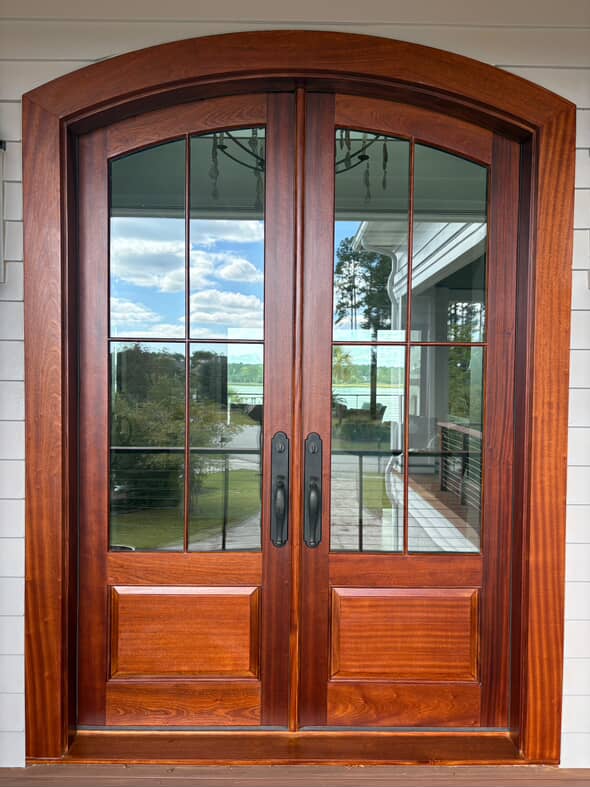
With a matt finish we recommend to apply 5 layers of high gloss varnish first. You can either use the Epifanes Clear Varnish or the Woodfinish Gloss. Later we will discuss the differences. After the solid build up of 5 layers, we would recommend to apply at least 2 coats of Woodfinish Matte. This gives the front door a nice soft feeling.
Also available are the Epifanes Mahogany or Teak stain. These stains can colour the wood. It is also possible to mix the stain through the varnish. This will darken the varnish and creates a pigmented varnish. You can mix up to 10% through the varnish.

Step 4: Materials needed to varnish a table or door.
Determine the required amount of varnish. Also ensure to have enough and the correct thinners. Do not forget necessary tools for the job, i.e. brushes, rollers, masking tape, abrasive paper, etc. and remember your personal safety (protecting gloves/clothes, mouth cap, safety goggles). Saving money on brushes, thinners and sand paper will reflect in the quality of your work and increase the possibility of failure.
Step 5: Surface preparation
A thorough surface preparation is time consuming. In case of bare wood, degrease with Acetone. Change your towel regularly and sand the wood with P180. Degrease again with Acetone
In the case where you have to revarnish older varnish layers, you can start with decreasing with Epifanes Spraythinner. This is the Spraythinner for single pack paints. Again, change the towels regularly. Sand the old coats thorough with P220-240.
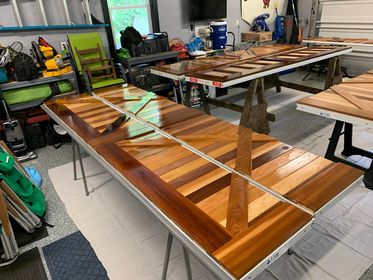
Step 6: Choose the right varnish and system for your project.
Epifanes Clear Varnish
The classic Epifanes Clear Varnish is very easy to use and can be applied on almost every type of wood. You can also apply this product on top of every previous varnished surface no matter what brand. When building up a system from bare wood, it is important to thin the first coat by 50% for a good penetration in to the wood. Thin the second coat by 25%. After two or three coats apply the varnish without any thinner to a minimum of seven coats. The more coats the better the UV protection and longevity. Light sanding or the use of a Scotch Brite is highly advised.
Epifanes Woodfinish Gloss
The Epifanes Woodfinish Gloss is a varnish-like finish similar to the traditional Clear Varnish. The largest difference is the oil component in the Woodfinish Gloss. This makes it especially suited for oily woods like Teak and Oregon Pine. Another benefit is that you do not have to sand between coats if the subsequent coat is applied within 72 hours at 18°C. When applying, thin down the first coat by 25-50% and build up to a minimum of 6 coats. Again, the more coats the better the UV protection and longevity. We advise to sand the surface well just before the last coat. This to smoothen the surface and create a nice and shiny surface.
Epifanes Woodfinish Matte
Epifanes Woodfinish Matte is a matte varnish for interiors and exteriors. This is also a matt varnish but does have a UV filter and it is therefore suited for exterior use as well. Very important is build up the system with a high gloss such as the Epifanes Woodfinish Gloss. The high gloss builds-up much faster, but also gives a better protection in the underneath layers.
Epifanes Mahogany and Teak Stain
These stains can colour the wood. It is very important to either apply the stain directly on the wood or mix it through the varnish in the first coats. You can apply multiple coats of varnish with stain mixed through the varnish. It is better to apply the first coat with a little bit less stain than with to much.
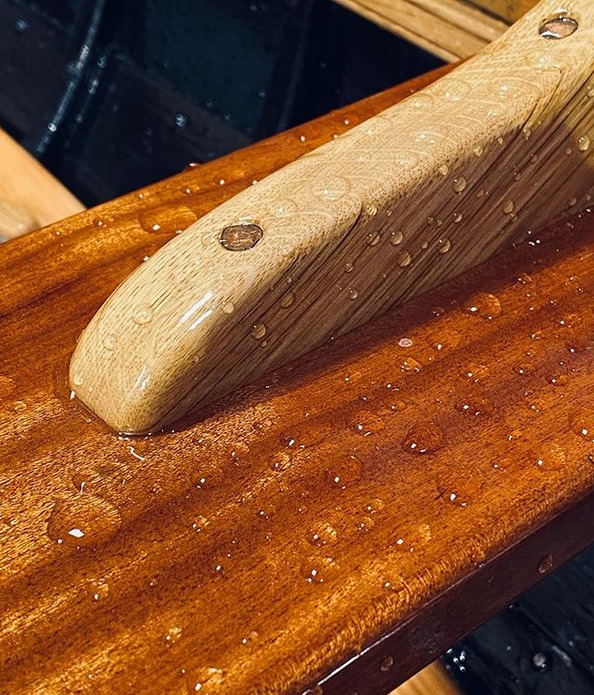
Step 7: Apply the full varnish system
After choosing the right product and system for your job, it is essential to apply the minimum required number of coats. In the Northern part of America and Europe with general lesser UV exposure a system should exist of at least 7 coats, where the first 2 or 3 coats are only impregnating the wood. The real protection comes from the final 4+ coats. It might be needed to apply more than 7 coats if the varnish is applied to a horizontal surfaces like tables. In Southern Europe or Southern states of America we see a higher UV exposure. We recommend to apply 12 coats. In these warmer climates maintenance intervals will be shortened. Here you will find all Epifanes varnish systems explained in more detail.
Step 8: After the work is done
After application, allow the varnish system sufficient time to harden. Make notes about the used products and quantity for future reference. But most important, do not postpone maintenance, but apply fresh varnish coats once loss of gloss is noticed. This helps a varnish system to withstand the forces of nature. Here you can find a video with the application of Clear Varnish.





